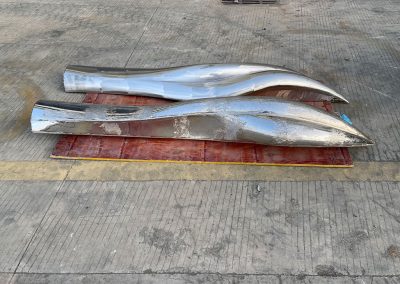Kevin answers a question from someone who has a combination TIG – arc welder about how to know when to use TIG and when to use arc (also known as stick welding or Shielded Metal Arc Welding). Welding a piece of 5-inch steel box tubing left over from a sculpture, he does some testing with the TIG welder, then the arc welder, which are both built into his Longevity TigWeld 250 AC/DC. He sets the TIG welder on straight DC and uses the foot pedal to control the amperage, and “stitches” across the gap he is welding. He then shows how he changes the welder from a TIG welder to an arc welder by removing the TIG cable and moving the ground, attaching the electrode holder, and changing the switches from TIG to arc and AC to DC because he wants to use an AC rod that’s a little heavier. He uses a 7018 AC rod to fill in the gap a little quicker. He also changes his gloves because arc welding creates sparks, which makes heavier gloves worthwhile. Then he remembers to unplug the TIG foot pedal. Kevin then plays with the amperage to get it right, showing how it blows out the gap when it is too hot. He also shows some porosity that is unacceptable in the weld. As he says, “This is why I like to practice.” He explains why he likes he prefers the TIG for lighter metals and inside welding, but that the arc is much better for heavier metals. As he points out, it all matters what it’s for and what it’s made of.

